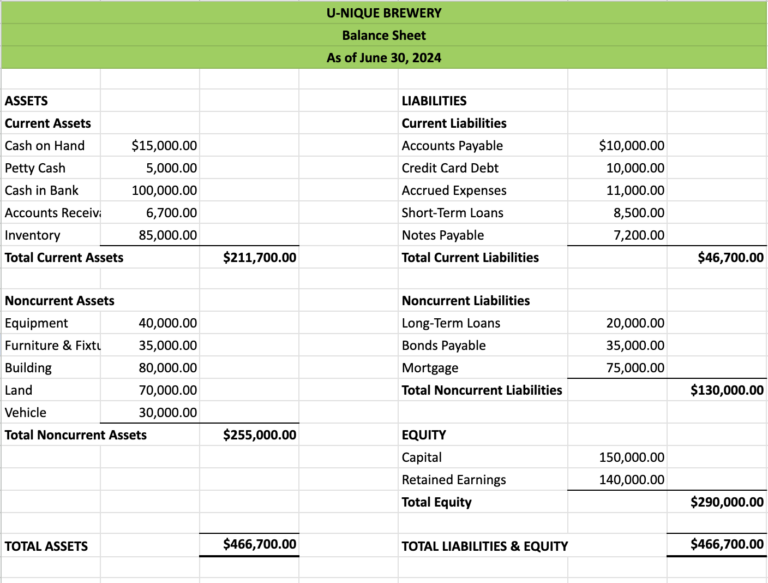5 Restaurant Tax Credits for 2023

One of our favorite parts about being an accountant for restaurants and breweries is the opportunity to save clients so much money.
I’m not sure what it is about other, general accountants, but we’ve found that many clients that come to us have not been taking advantage of lucrative tax breaks that could have saved them tens to hundreds of thousands of dollars over the years!
Yes, hundreds of thousands!
In this blog, we’re discussing our 5 favorite tax breaks for restaurant owners.
Note: If your existing accountant isn’t utilizing these money-saving strategies, we should probably have a chat.
Let’s dive in!
We're discussing these 5 restaurant tax credits:
The FICA Tip Credit
The FICA Tip Credit is a government program that helps restaurants and bars save on taxes they owe on employee tips.
Before the credit was put in place, the IRS estimated that only 15% of tip income was being reported. The FICA Tip Credit aims to reduce this by eliminating taxes on tips, in order to discourage businesses from hiding or underreporting tip income.
Without the FICA Tip Credit, you could end up paying a large amount of payroll tax on employees’ tips.
In fact, we wrote an article all about the FICA Tip Credit as a direct result of a new client we picked up on the west coast. They have been operating a bar for over 5 years that generates around $500,000/yr of revenue, and never claimed this credit. Their accountant made them miss out on about $60,000 of tax credits. Luckily we can amend a few years, but more than half of this credit is permanently lost!
The credit can be claimed every year, even if it doesn’t seem like it will make a significant difference, and any unused credit can be carried forward for up to 20 years until it is fully used.
You can read more about the tax credit here.

The Employee Retention Credit
In an effort to help small businesses after COVID-19, the U.S. government released The Coronavirus Aid, Relief, and Economic Security (CARES) Act which included various relief programs, loans, and grants for small business owners.
The Employee Retention Credit is a part of the Act, and is essentially a refundable tax credit that you can claim against certain payroll taxes accumulated in 2020 and 2021.
It offers qualifying restaurants and other small businesses cash back for up to 50% of employee salaries paid from March 13th to December 31, 2020, and 70% of salaries paid in 2021.
The calculation is performed quarterly with a max of $10k of eligible wages per employee, per year for 2020, and a max of $10k of eligible wages per employee, per quarter, for 2021.
Oh, and Tips reported as wages also count for the calculation.
This credit can mean tens of thousands, if not hundreds of thousands of dollars in free cash for your restaurant, simply for being a restaurant with paid staff during COVID-19.
The good news is that you can still apply for the ERC as long as funds are available. As of the publishing of this blog in January 2023, they are! You have until April 15, 2024 to file amended returns for Q2, Q3, and Q4 of 2020, and you have until April 15, 2025 to file amended returns for 2021.
The even better news is that as a restaurant owner, there’s a 99.9% chance you qualify.
We made a whole blog article about it here.
Qualified Business Income
As a restaurant owner, if you operate your business as a sole proprietorship, partnership, or S corporation, you may be eligible for a special tax break called the QBI deduction that came about during the 2017 Tax Cuts and Jobs Act tax reform. (Yes, technically this is a tax deduction, not a tax credit, but it will save you thousands of dollars all the same!)
This key deduction allows you to deduct a portion of the money you make from your restaurant business on your taxes.
To claim the QBI deduction, you’ll first need to calculate your qualified business income (QBI) for the tax year. This is the amount of money you made from your restaurant business, minus certain items that aren’t included (like capital gains or losses, or income from outside of the US). Once you have that number, you can deduct up to 20% of it from your taxable income.
Additionally, if you receive any income from qualified real estate investment trust dividends or qualified publicly traded partnerships, you can also deduct an extra 20% of that income. But, there are some limits to this deduction, depending on your taxable income, the amount of W-2 wages paid by the restaurant, and the unadjusted basis immediately after acquisition (UBIA) of qualified property held by the restaurant.
It’s important to note that this deduction can be complicated, so it’s always a good idea to consult with an experienced restaurant accountant to make sure you’re complying with tax laws.

The Credit for Increasing Research Activities (R&D)
The R&D tax credit is an often overlooked credit. Most accountants don’t dig into this credit as they think it’s only available to those conducting experiments in a laboratory.
However, it can be applied across many industries, including restaurants and breweries. Every time you experiment with a new recipe, it’s considered R&D, and can qualify as applicable labor and supplies costs for this credit.
What’s even better, is while most credits are claimed once a year on your tax return, this credit can be claimed quarterly on your payroll tax returns.
Prior to 2022, these expenses could be deducted and claimed for the credit. For tax years 2022 and on, the IRS has currently halted the ability to deduct your R&D expenses in the year incurred and now require all R&D to be capitalized and slowly amortized over a 5 year period.
The Work Opportunity Tax Credit (WOTC)
Last but not least, the Work Opportunity Tax Credit (WOTC) is a government program that gives restaurant owners a tax credit for hiring employees from certain target groups who have faced significant barriers to employment.
This credit is designed to encourage employers to hire individuals from these groups, who may have difficulty finding employment, by providing a financial incentive in the form of a tax credit.
To qualify for the credit, the employee you hire must be a member of a target group, such as veterans, individuals receiving food stamps, or those receiving certain forms of public assistance.
The credit amount varies depending on the target group, the length of the employee’s work, and the amount of wages paid to the employee.
For example, for a non-disabled veteran, the credit can be as much as $2,400, while for an individual from a designated community, the credit can be as much as $2,400 as well.
The credit can be claimed on your federal income tax return, Form 3800, General Business Credit. And if the credit amount exceeds the employer’s federal income tax liability for the year, you can carry the unused credit forward to the next year, or even up to 20 years.
It’s important to note that to claim the credit, you must obtain certification from the designated local agency that the employee is a member of a target group. So, if you’re interested in claiming this credit, it’s best to contact the designated local agency in your area for more information on the certification process and the requirements for the credit.
Chat With an Experienced Accountant
As we mentioned in the beginning, if you’re not currently taking advantage of these credits and deductions, it might be time for a chat.
We help restaurant and brewery owners across the U.S. maximize their profits and reduce the money that’s handed over to Uncle Sam.
You can ask us a question or chat with us about our services by using this form here.
Simply book a 15-minute chat and we’ll help point you in the right direction.
Until next time!



